For those seeking an accessible yet incredibly rewarding backpacking experience in the Midwest, the Manistee River Trail loop stands out as a premier destination. Tucked within Michigan’s expansive Manistee National Forest, this roughly 20-mile circuit offers a diverse blend of riverside paths, forested ridges, and stunning seasonal beauty, especially during the vibrant autumn months. Planning a trip focused on backpacking manistee river trail promises breathtaking scenery, well-maintained paths, and a chance to disconnect in nature. It’s a loop that caters well to both seasoned backpackers and those looking for their first multi-day adventure, providing a perfect blend of challenge and accessibility.
Planning Your Backpacking Manistee River Trail Adventure
Embarking on a backpacking trip requires careful preparation, and the Manistee River Trail loop is no exception. Knowing the route, understanding regulations, and preparing for conditions will ensure a safe and enjoyable journey. This section covers the essential details you need before you hit the trail. If you’re interested in discovering more outdoor opportunities in the state, the Manistee River Trail is often highlighted among the [best backpacking trails in michigan].
Trail Specs and Overview
The Manistee River Trail (MRT) and the North Country Trail (NCT) combine to form a loop approximately 19.1 miles long, with an elevation change of around +/- 2540 feet over the entire circuit. This classifies it as a Class 1 difficulty trail, meaning it involves relatively moderate terrain with some elevation changes but no technical climbing. Most backpackers complete the loop over 2 days and 1 night, though it can easily be stretched into a more leisurely 3-day/2-night trip. The loop is located within the Manistee National Forest, traditionally the home of the Odawa people.
The route is straightforward: choose one of the several access points (like Red Bridge, Cottage Road, or South Slagle Creek Road) and follow the well-marked trails. Hiking the loop clockwise or counter-clockwise offers slightly different experiences, particularly regarding the elevation profile and when you encounter the more scenic river sections.
Permits, Regulations, and Resources
One of the appeals of backpacking manistee river trail within the National Forest is the relatively relaxed regulations. As of the last check, permits are not required for hiking or overnight stays on this loop. Dispersed camping is permitted along both the MRT and NCT sections, provided you follow Leave No Trace principles and choose established sites where available, particularly on the MRT side. Numerous established, free, first-come, first-served campsites are marked along the Manistee River Trail, offering convenient and scenic spots.
Parking is generally free at the main access points like Red Bridge, Cottage Road, and South Slagle Creek Road. The Seaton Creek Campground access point requires a small fee, payable at a self-registration station. It is paramount to adhere to the Leave No Trace principles to preserve the natural beauty and sustainability of the trail for all users. While specific resources cannot be linked here, consulting the U.S. Forest Service website for the Huron-Manistee National Forests is highly recommended for the most current information on trail conditions, closures, and regulations. Dedicated trail maps from reputable sources are also invaluable for navigation, marking campsites, water sources, and points of interest.
The Trail Experience: Beginning on the Manistee River Trail
Our own journey began near the Cottage Road access point, joining the Manistee River Trail section first. It’s a great way to start, as the MRT immediately offers stunning views and sets the tone for the riverside portion of the loop. The trail here meanders through varying forest types, from young tunnels of trees to more open pine stands, with the ground often carpeted in vibrant fall leaves.
Setting off on the Manistee River Trail loop, ready for a relaxing weekend adventure.
The MRT side is known for its proximity to the Manistee River, offering frequent glimpses and access points to the water. The path undulates gently, passing through riverside marshes, dark cedar swamps, and along open ridges overlooking the water. Finding a campsite is a key task, especially arriving later in the day. The established sites are marked and offer varying levels of space and views. Even with many sites occupied, you can usually find a suitable spot, like finding site 10b, a spacious site right by the river with excellent views of the colorful trees across the water.
Setting up camp as dusk settles in is a peaceful ritual. The sounds of the river and the rustling leaves create a serene atmosphere. Evening routines like preparing dinner, whether a simple no-cook meal or a rehydrated feast, feel earned after a day on the trail. Even a light drizzle can’t dampen the spirits when you’re nestled in the forest by the river.
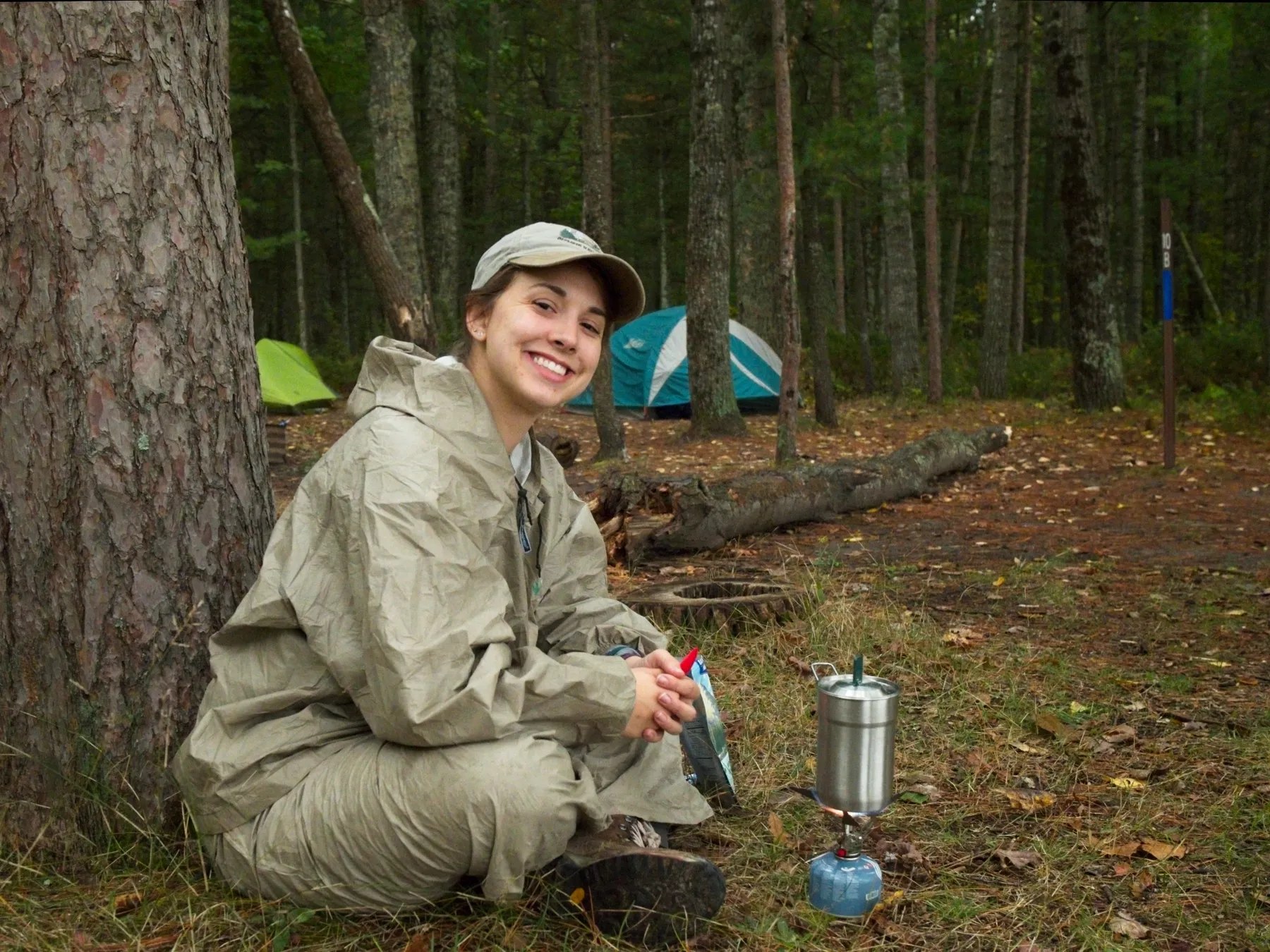 Two backpackers enjoying a meal at a campsite on the Manistee River Trail
Two backpackers enjoying a meal at a campsite on the Manistee River Trail
Transitioning to the North Country Trail
The next morning often begins with the promise of new scenery as you prepare to switch to the North Country Trail section. Rising early, especially from a riverside campsite like 10b, can reward you with beautiful sunrise colors reflecting off the water and through the trees – a perfect start to another day of backpacking manistee river trail.
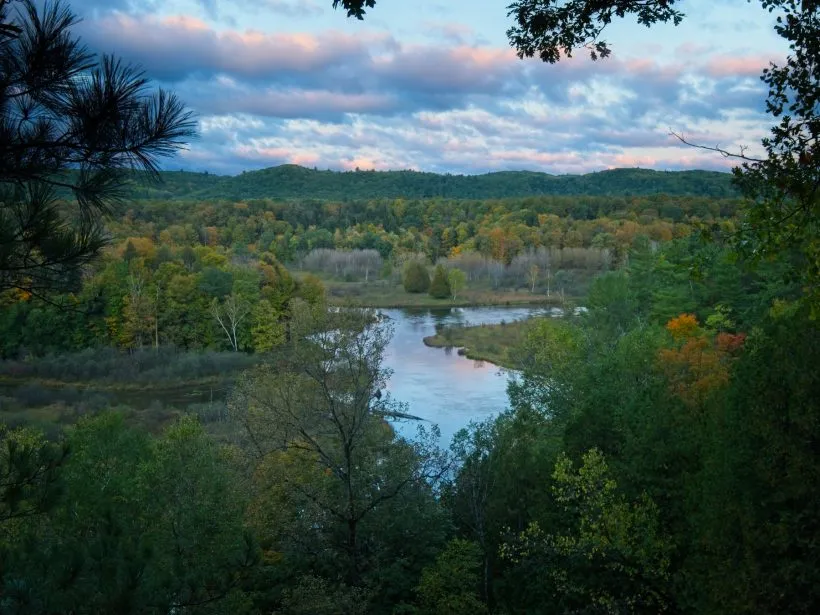 Sunrise casting a golden glow over the Manistee River valley from a campsite
Sunrise casting a golden glow over the Manistee River valley from a campsite
After packing up, a short hike brings you to the Red Bridge access point. This is a crucial point for water management. While there might be seasonal potable water sources at the nearby campground (check status before relying on it!), the Manistee River is a reliable source, requiring filtration or purification. Filling up here is essential, as the NCT section offers limited access to water for a significant distance.
Filtering water from the Manistee River before heading onto the NCT.
From Red Bridge, the trail ascends via some steep hills to meet the North Country Trail. The NCT is a massive trail system spanning thousands of miles, and this section forms the eastern part of the Manistee River loop.
Hiking the North Country Trail Section
In contrast to the riverside strolls of the MRT, the North Country Trail section generally follows a forested ridge line, often out of sight of the river itself. This part of the loop involves more significant and sustained elevation changes, providing a different kind of physical challenge and experience compared to the gentler ups and downs of the Manistee River Trail. The trail winds through mixed forests, offering dappled sunlight and opportunities to observe the flora and fauna of the Manistee National Forest. For those exploring the wider region, note that the Manistee National Forest offers numerous areas for [backpacking in manistee national forest], with the MRT loop being one of the most popular.
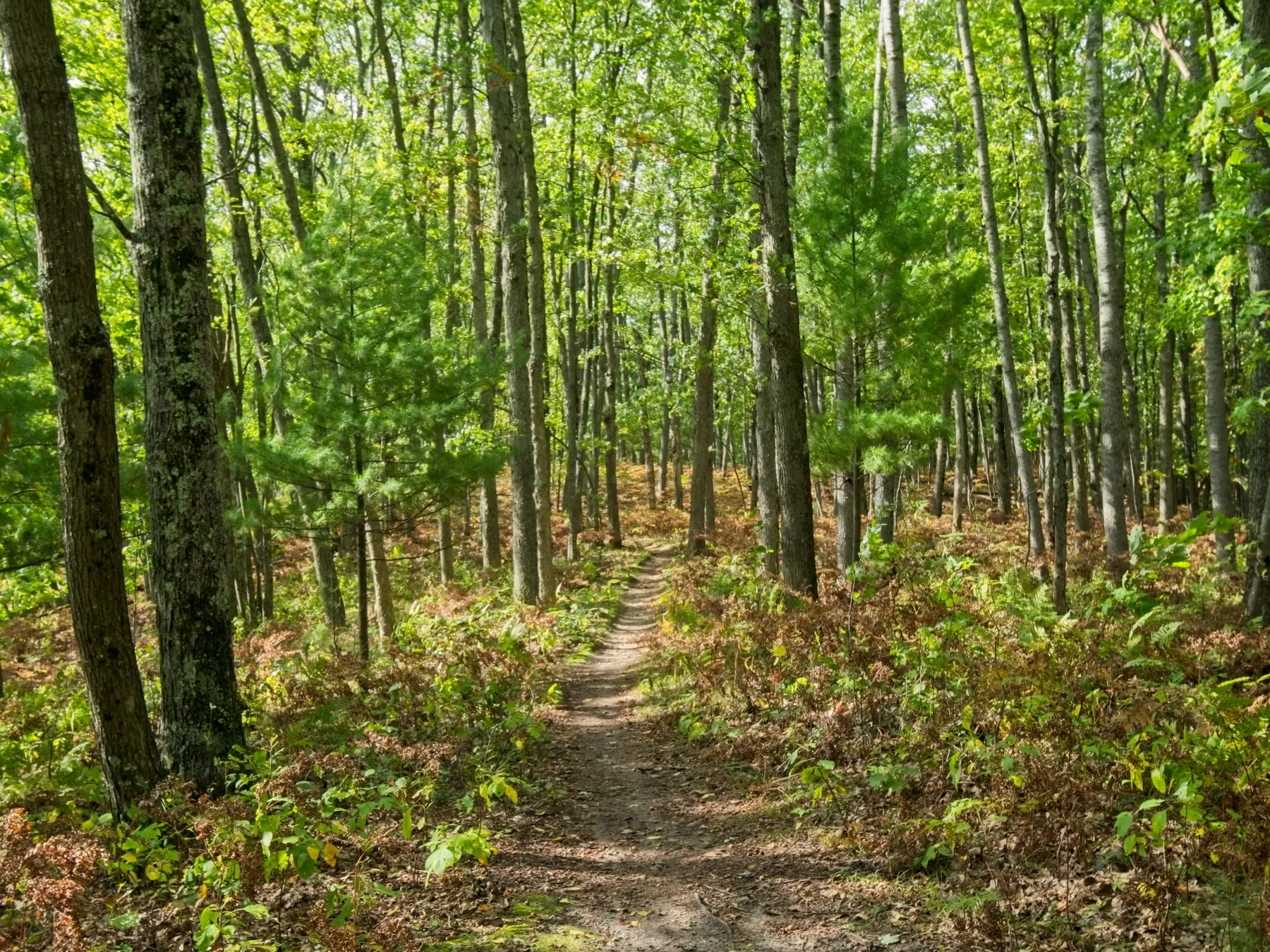 Hiking through a mixed forest on the North Country Trail section of the Manistee River loop
Hiking through a mixed forest on the North Country Trail section of the Manistee River loop
Hiking the NCT ridge is a pleasant experience, especially during peak fall color. The shade and variety of trees make for a beautiful walk. While scenic overlooks like Red Hill exist, they can sometimes be less impressive than the consistent river views of the MRT. However, the solitude on this side of the loop can be a welcome change, often with fewer hikers encountered compared to the more popular river trail.
Choosing a campsite on the NCT side involves finding dispersed sites that meet regulations. Camping beside a quiet creek like Eddington Creek offers a different ambiance than the riverside sites. Setting up camp, perhaps with tents still slightly damp from previous rain, is followed by the comfort of a campfire as the evening chill sets in. Enjoying dinner and hot drinks by the fire is a classic backpacking experience that caps off a day of varied terrain and forest immersion.
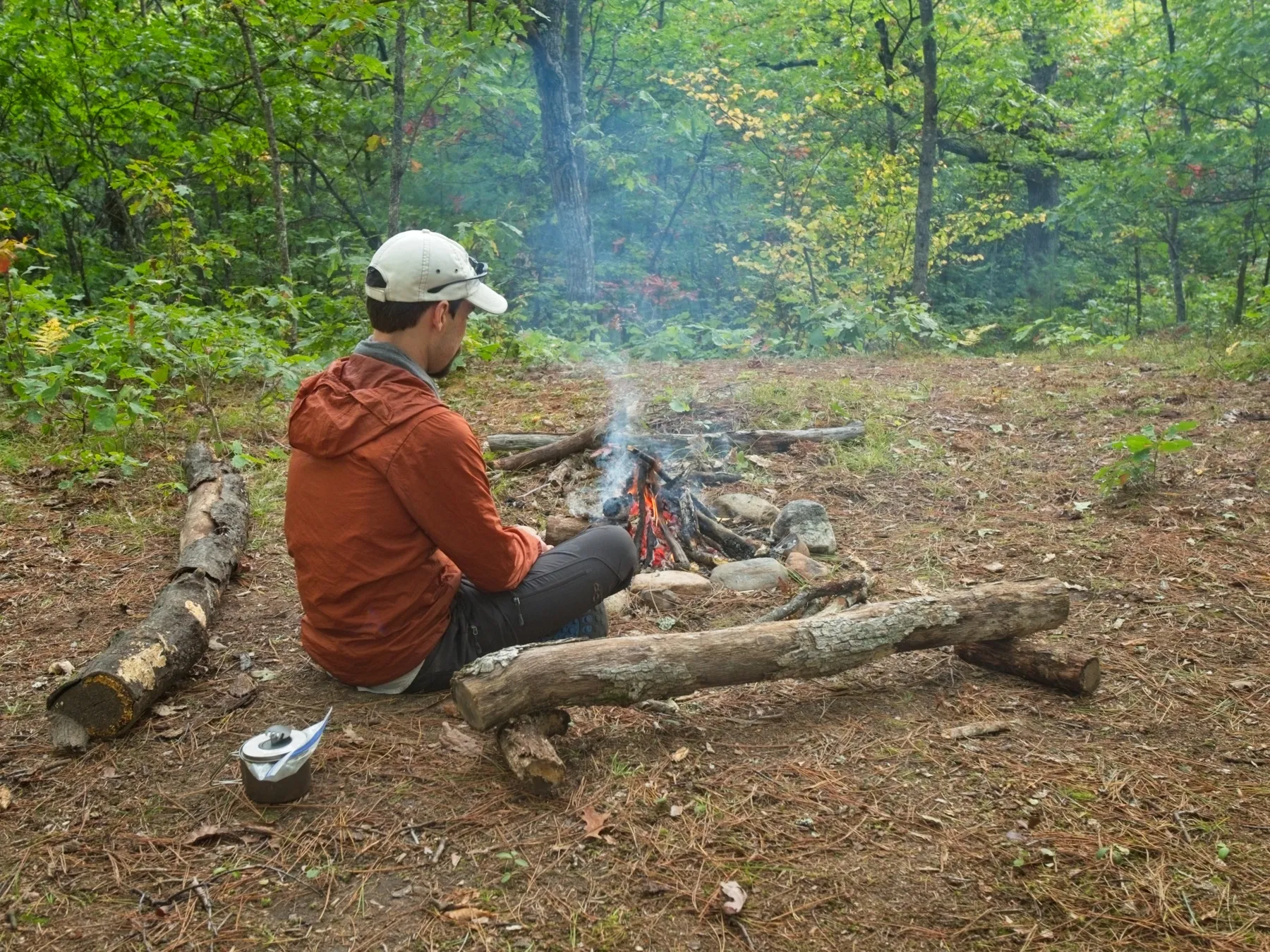 Backpackers gathered around a campfire at a campsite on the North Country Trail
Backpackers gathered around a campfire at a campsite on the North Country Trail
Completing the Loop: Return to the River
The final day of backpacking manistee river trail brings you back to the familiar riverside path. Starting the day with a walk along an old railroad grade provides an easy warm-up before connecting back to the main loop. About a mile from the Eddington Creek area, a spur trail leads down towards the river and the iconic suspension footbridge. Crossing this bridge is a highlight, offering great views of the river and connecting you back to the Manistee River Trail.
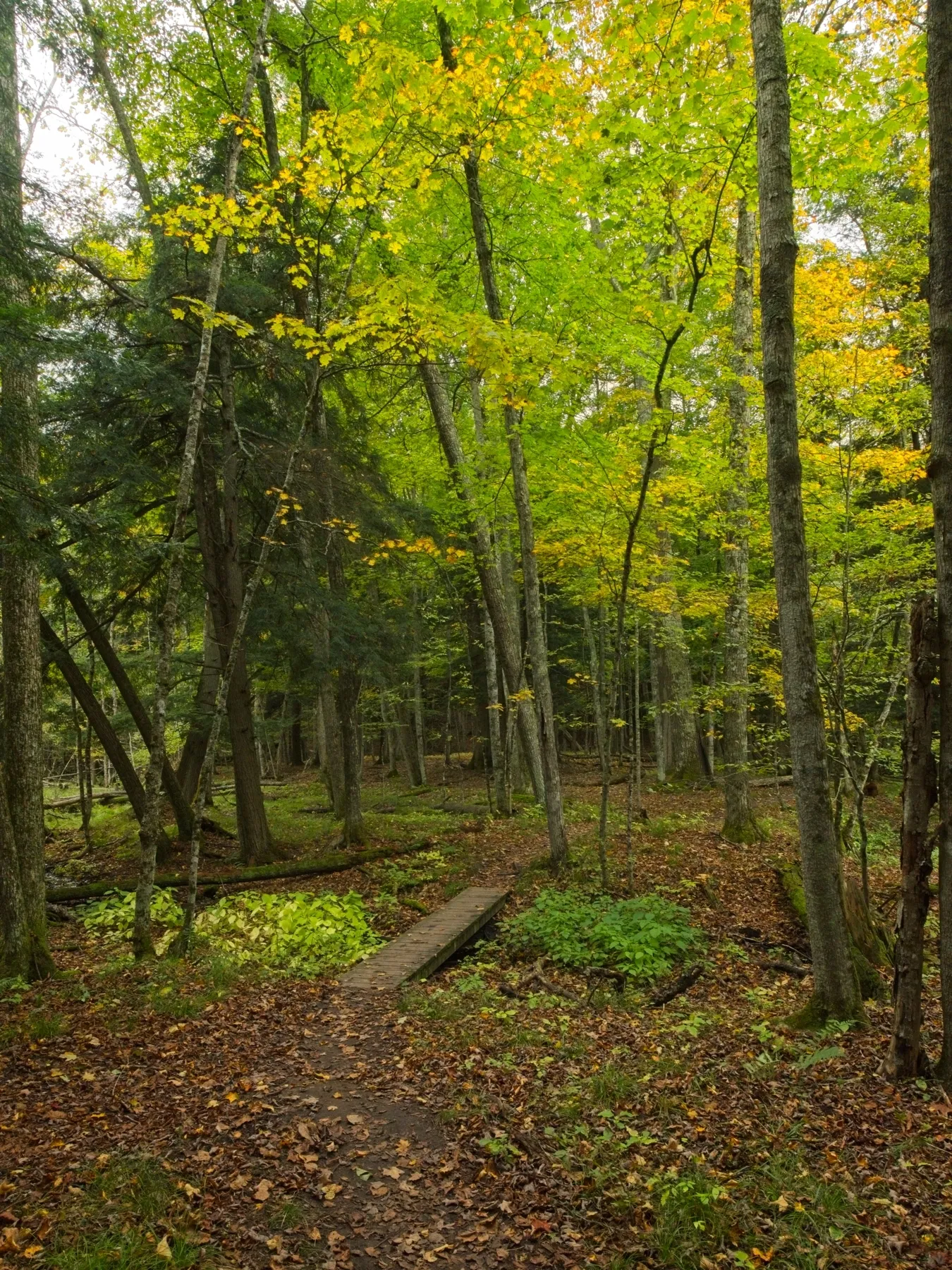 A suspension bridge spanning the Manistee River
A suspension bridge spanning the Manistee River
Once back on the MRT, the views immediately become more consistent. The trail often follows the ridge just above the river, providing spectacular vistas, especially around the U-shaped bends, like the famous Horseshoe Bend.
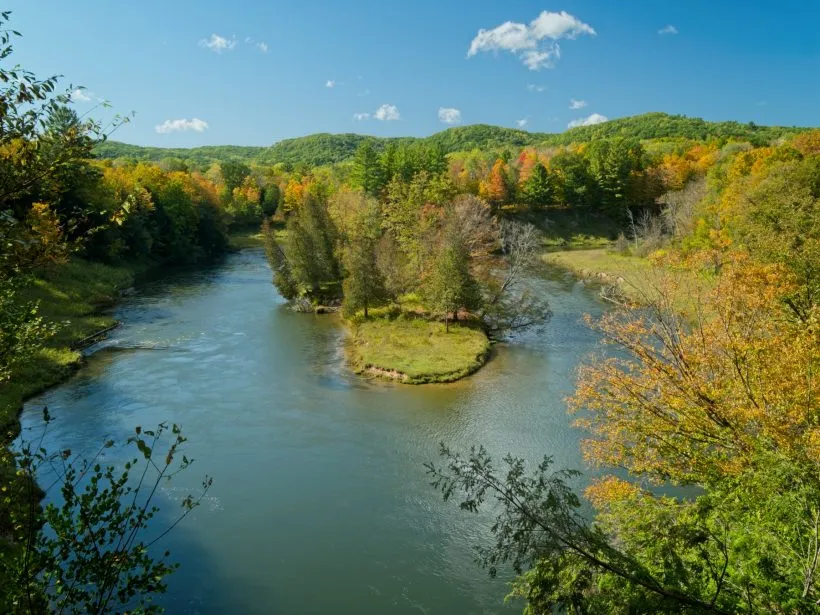 Panoramic view of the Manistee River at Horseshoe Bend
Panoramic view of the Manistee River at Horseshoe Bend
Walking alongside the river is arguably the most scenic portion of the loop. While the NCT offers its own charm, the constant presence and dramatic turns of the Manistee River are truly captivating. The trail is well-marked with blue diamond blazes. Along this stretch, you’ll pass features like the small “waterfall” (notable for being one of the few in Michigan’s Lower Peninsula) and navigate several creek crossings. The varied terrain keeps the hike interesting, shifting between sandy paths, forested sections, and marshy areas.
Taking your time on this final section is recommended. Enjoying snack breaks by the riverbank, soaking tired feet, or even taking a short morning nap in the sun are simple pleasures that enhance the experience.
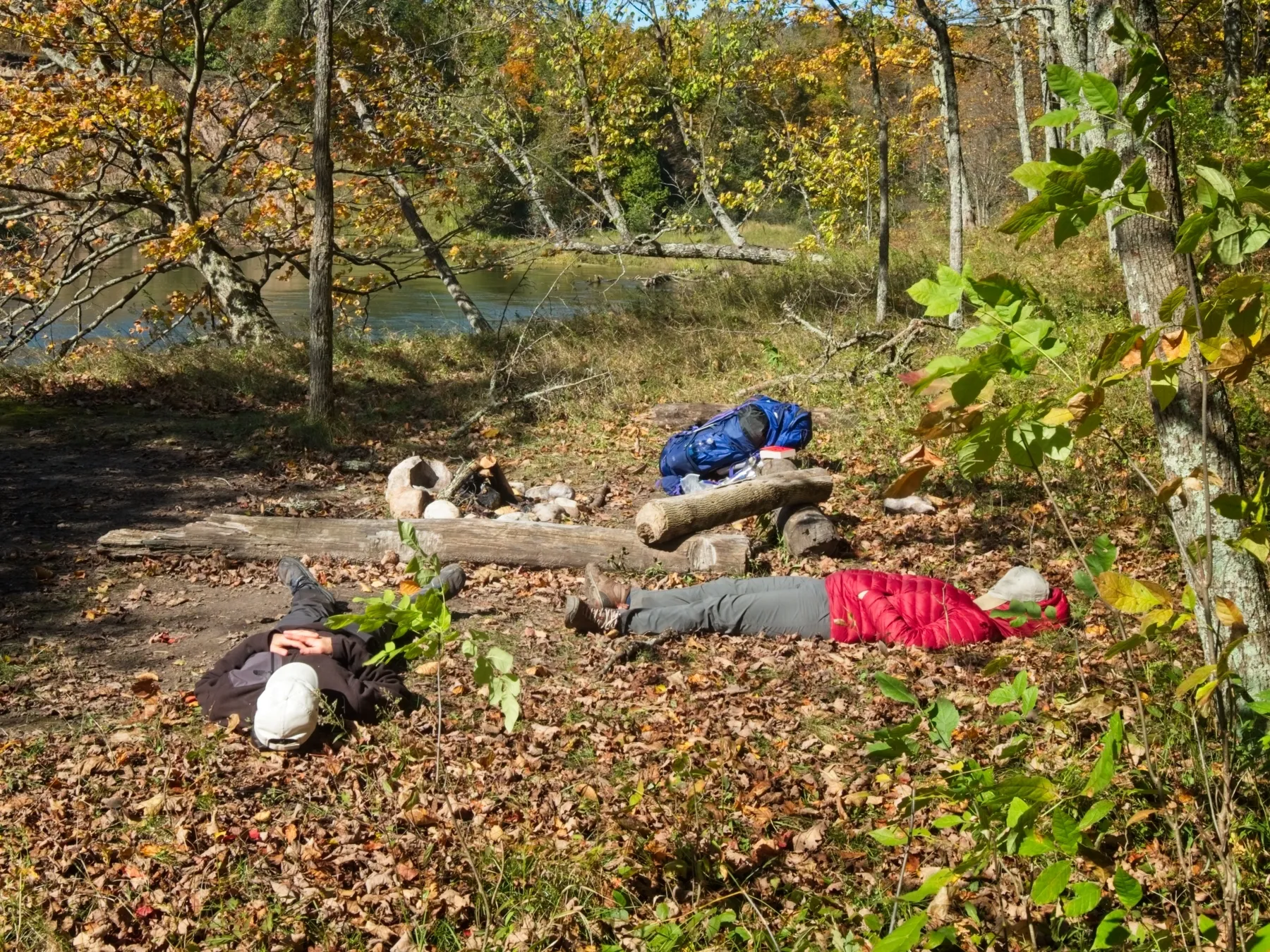 Two backpackers taking a break and napping beside the Manistee River
Two backpackers taking a break and napping beside the Manistee River
As you near the end of the loop, the trail may briefly leave the river behind, crossing creeks like Slagle, Dead, and Cedar Creeks before a final climb through a pine forest leads back to the Cottage Road parking area. Arriving back at the car, perhaps covered in leaves, signifies the successful completion of a fulfilling backpacking trip on one of Michigan’s finest trails. Michigan offers many stunning natural attractions, and the Manistee River Trail is a prime example of the beauty found among the [places to visit in michigan].
Essential Tips for Backpacking the Manistee River Trail
Based on our experience and the nature of the loop, here are a few tips to enhance your trip:
- Water Strategy: Filterable water is readily available along the Manistee River Trail, but less so on the North Country Trail ridge. Fill up generously at Red Bridge or the suspension bridge spur trail before ascending to the NCT.
- Campsite Availability: The established sites on the MRT are popular, especially on weekends and during peak season (like fall color). Have a few potential sites in mind and be prepared to take a dispersed site on either trail if necessary. Arriving earlier in the day helps secure a preferred spot.
- Navigation: While the loop is well-marked, carrying a detailed map (physical or digital) is crucial for understanding mileage between points, locating campsites, and identifying water sources.
- Weather Preparedness: Michigan weather, especially in the fall, can change rapidly. Be prepared for rain, cool temperatures (even near freezing overnight), and sunshine, all within a single trip. Layering is key.
- Leave No Trace: Practice all seven LNT principles diligently. This includes proper waste disposal (pack it in, pack it out, bury human waste away from water sources), minimizing campfire impacts (use established rings where possible, keep fires small), respecting wildlife, and being considerate of other users.
Backpacking manistee river trail offers a truly memorable adventure, combining the beauty of a major river with the solitude of forested ridges. It’s an accessible challenge with ample rewards in scenery and trail experience. Whether you’re seeking vibrant fall colors, a refreshing summer escape, or a quiet spring trek, this loop is a fantastic option in Michigan’s diverse landscape.
